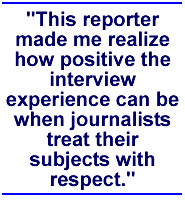
Sidebar - Living—and Dying—with the Media
A parachutist plummets to the base of the Space Needle after an ill-fated jump. Four men are injured, two of them fatally, when a gunman opens fire in the office of a Seattle shipyard. Two boys are rushed to the hospital with critical burns after a gas-pipeline fire in Bellingham.

Harborview Medical Center, owned by King County and managed by UW, is Washington state's only level one trauma center.
When serious trauma occurs, all roads lead to Harborview Medical Center—both for the injured and the reporters who cover their stories. During my 10 years coordinating media relations at the state's only top-level trauma center, I saw journalists at their best—and their worst—as they converged at the hospital to report on our patients.
The parachutist survived her fall with minor injuries and felt well enough to grant media interviews within hours of being hospitalized. Other victims of trauma, however, aren't as fortunate, and then the relationship between the patients, their families and the media can become complex.
I can recall insensitive behavior by over-eager journalists. The memories usually begin with my getting a phone call from an angry nurse, as happened the time two newspaper reporters arrived unannounced at a teenager's room. "Did I know these reporters were coming, and didn't I realize the kid was still heavily medicated after just getting out of surgery?" she asked.

Of course, I didn't know they were coming, and I sent the reporters on their way as soon as I could get up to the teenager's room. They had wanted, it turned out, to ask about a drinking and driving fatality as a result of the car crash that injured our patient.
Another episode, however, stands out as a wonderful example of how a journalist (from the same newspaper) got his story and created a warm feeling for the people he interviewed.
Shootings at a Seattle high school left two students with minor injuries. One of them spent the night at Harborview, and she and her mother agreed to an interview with the reporter the next day.
The writer, a police-beat veteran, explained the questions he would ask and then allowed both women to tell their stories. The student took the opportunity to say she hoped to be a leader in promoting non-violence when she returned to school.
Then the interview ended, and the reporter did something I'd never seen before. He asked the girl and her mother if they wanted to read his article before he submitted it to the paper. He showed them his laptop computer and changed one detail at their request. (I won't mention his name, lest his colleagues criticize him for breaking the journalistic protocol against showing a story to a source.)
By offering some control to the girl and her mother, this reporter made me realize how positive the interview experience can be when journalists treat their subjects with respect. He gave the girl an opportunity and helped her find her voice. —Larry Zalin
Go To: Page 1 | Page 2 | Page 3 | Page 4
- Sidebar: Living—and Dying—with the Media
- Return to March 2001 Table of Contents